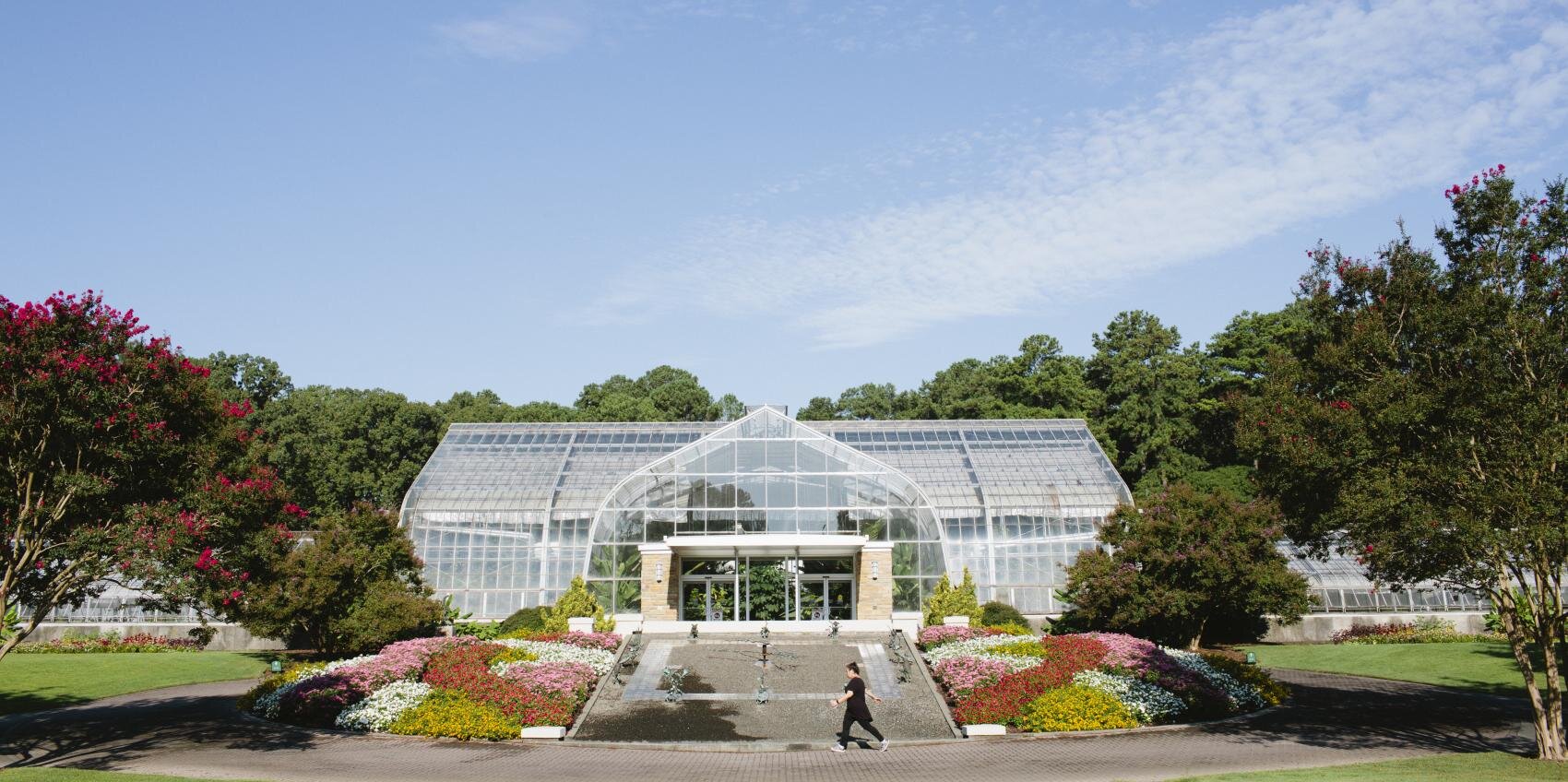The crisp, Fall air is right around the corner and so is the ever anticipated changing of the leaves. The Birmingham Botanical Gardens is just the place for you to wander this season, so stop and smell the roses while we discuss this natural gem in the heart of our city.
Read MorePhoto by Ball Park Digest
Building Spotlight: Take Us Out To The Ball Game at Rickwood Field
Just like the city of Birmingham, Rickwood Field is known for having its own rich history. We’re traveling back in time to visit America’s oldest professional baseball park, still with its original structure, to examine its design and how it’s utilized today.
Read MorePhoto credit: https://en.wikipedia.org/wiki/Birmingham_Terminal_Station
Birmingham Buildings We’ve Lost to History
Birmingham is The Magic City for many reasons including being home to amazing historic architecture. However, as time carries on and as new projects take shape, many of these magical buildings are left in the past to make room for the future. Let’s take a look at a few Birmingham buildings we’ve lost to history and why it’s important to preserve the ones still around.
Read MoreParks and Recreation (Birmingham Edition)
To celebrate the official start of summer this month, we’re highlighting some iconic Birmingham parks and the positive impact they have on the urban community. Offering a little bit of everything from access to nature, entertainment and the city’s historical architecture, enjoy our guide to a few of our favorites!
Read MoreKeep It In The Family
Keep It In The Family—How we use architecture to create closeness in a family. Picture the layout of your home. Which rooms are connected and which ones are separated? As you’re envisioning, think about where your family spends the most time together. Why is that? We’re going to discuss the ways in which we use architecture to create closeness in a family.
Read MoreLights. Camera. Architecture. – The Magical Design Process of Harry Potter
Are you a Hufflepuff, Gryffindor, Slytherin or Ravenclaw? Just like each house, you probably also have a favorite set design or location in the mystical world of Harry Potter. Production Designer Stuart Craig is the mastermind behind designing its iconic architecture.
Read MorePhoto by Rachael on Unsplash
Tiffany & Co.—The Rise of Blue
When you hear the name Tiffany & Co., what do you think of? Maybe you picture Audrey Hepburn eating a croissant staring longingly into the store’s windows in the 1961 film “Breakfast at Tiffany’s.” Or maybe you think of the baby blue, trademark color that seems to be synonymous with luxury. Yet, perhaps one of the brand’s most iconic namesake’s is its flagship store, located in New York City on Fifth Avenue. Though not Tiffany’s first flagship store, it remains the longest standing and most popular. Let’s dive deeper into the famous jewelry brand’s colorful history.
Read MorePhoto by Nauman Abdul Hafeez
The Rise of the Connection Between Cars and Citie
From the time of the horse and the buggy, mobile transportation has linked American infrastructure to the ways humans interact with cities. When Ford manufactured the famous Model T car in 1908, cars quickly assimilated in the American way of life. As cars became more common, cities began to change. Architects such as Harvey W. Corbett and Le Corbusier began imagining utopian cities in which cars and people would be separated on levels to account for different paces of traffic. One look around a modern city today will tell you that this idyllic dream never came to fruition.
Read MorePhoto by Ketut Subiyanto.
4 Post-Covid Office Trends
The Covid-19 pandemic has shifted our world in a variety of ways over the past two years. The pandemic has not only impacted our social and personal lives but also our professional lives. The way that we work has changed. As an architectural company that designs and renovates commercial and office spaces, it is important that we stay aware of the post-Covid office trends and you should too.
Read More20th Street Birmingham Green Refresh
The City Center District Management Corporation (CCDMC) is bringing Birmingham a stunning and smart makeover. The reinvention of 20th Street, which spans from the railroad tracks to Linn Park, is currently in the final phase. The project began on October 11, 2021, and should be finished in time for the start of the World Games on July 7, 2022.
Read MoreFlorentine Building in Birmingham Alabama is a photograph by Michael Thomas which was uploaded on December 9th, 2015.
The Alabama Historic Rehabilitation Tax Credit Saves Birmingham Buildings
Alabama has a multitude of historic properties that have been worthy of preservation throughout the years, particularly in Birmingham. The Alabama Historic Rehabilitation Tax Credit exists. This program is a 25% refundable tax credit for both commercial property owners and private homeowners who significantly restore and/or rehabilitate properties that are eligible for the National Register of Historic Places and are 60 years old or older. Let’s take a look at some of the buildings that have been saved by this incentive program.
Read MorePhotography sourced from BHM Opportunity.
The Magic City is now an Opportunity Zone
As 2022 blazes forward, it seems as if new developments and architectural projects are popping up every day in Birmingham. Just last year, the new Protective Stadium opened and solidified The Magic City’s position as the go-to spot for all things sports and entertainment. This is great news for architects, as it opens the door for a wide variety of new projects and opportunities. From new apartment complexes to shopping centers and urban areas, we’ve gathered up some of the most exciting projects coming to Birmingham in the upcoming months.
Read MoreBlending Built and Natural Landscapes
The fusion of modern architecture with the natural environment creates connections and experiences for the people who reside and work in these structures. No longer does a home need to be a completely separate entity from the land on which it sits. With modern design features such as expansive glass walls and sliding doors that allow for indoor-outdoor living, a home may seamlessly merge with nature. There is even a term used to describe structures that incorporate natural elements within its design in order to improve the quality of life for its habitants: biophilic design. Here are five examples of how modern architecture can coexist harmoniously with the environment around us.
Read MorePhoto by Olya Kobruseva from Pexels
The History of the Gingerbread House - The Greatest Confectionary Construction
Every holiday, families construct one of the most edible architectural structures: the Gingerbread House. Crisp cookie walls and a roof decorated with icing, gumdrops, and an assortment of candy are markers of the iconic holiday treat. Although the exact origins are unclear, the gingerbread house continues to be a part of many households’ Christmas traditions.
Read MorePhoto by Rodolfo Quirós from Pexels
Common Building Materials Every Architect Needs to Know
Materials used to construct buildings not only shape the structures themself but also our perception of them. The St. Basil’s Cathedral in Moscow is recognized for its boldly colored exterior made of painted bricks and wood. Frank LLoyd Wright’s Guggenheim museum is shaped by one-of-a-kind plywood forms filled with gun-placed concrete to create the iconic curves of the building. The Empire State Building combines Indiana limestone and granite, 10 million bricks and 730 tons of aluminum and stainless steel to form its imposing exterior.
Read MoreThe Heaviest Corner on Earth
Move over New York — the city of Birmingham has an architectural claim to fame that some might call more impressive than the Empire State Building. Magic City is home to the ‘Heaviest Corner on Earth,’ a crucial indicator of the development of downtown Birmingham. The corner of 20th Street and 1st Avenue North boasts the title, so given in the early 20th century when four of the South’s tallest buildings were erected in the area between 1902 and 1912.
Read MoreOur Design Process: What to Expect with ADA
Every artist, scientist, engineer and creator has a specific process they follow when working on projects. Whether creative or scientific, these processes lay the foundation on which all creations are built on. Architects are no different, yet the process we follow is not a linear one. While some steps in the design process automatically lead into the next, other parts of the process are not so beholden to such succession. The path architects follow when designing spaces can be described using the Japanese word Kaizen, which means “continuous improvement or change for the better.” Let’s dig a little deeper into this dynamic process to see how the proverbial sausage gets made in an architect’s office.
Read MoreThe Buildings of Birmingham
The beautiful city of Birmingham is home to a wealth of unique and historic spaces that serve our community with their many activity opportunities, from exotic zoos to shopping malls and expansive parks. First up on ADA’s Birmingham Building Series features are the Riverchase Galleria, the Birmingham Zoo, the Birmingham Botanical Gardens, as well as one of the area’s most famous parks.
Read MoreTools of the Modern Architect
Architectural design techniques have come a long way since the Greeks built the Parthenon and the Romans built the colosseum. As art, science and technology have evolved through the years, so too have the methods and tools with which architects design the buildings that we eat, pray, love and worship in. While hand drawings will always be a central technique to the practice, modern programs such as computer-aided design and graphics software have allowed architects to increase the scope, scale and speed of their work. Let’s break down the tools that modern architects use to create innovative and impactful solutions for their clients.
Read MoreForm and Function
The idea of form follows function proposes that a building’s purpose should be the starting point for its design, rather than its aesthetics. As previously mentioned, this axiom is commonly attributed to Louis Sullivan. The phrase was associated with modernist architects in the early-20th century, as skyscrapers (the ultimate example of form following function) became more prominent following their introduction in the 1890s. The birth of the office reflected the changing workforce and introduced a new age of architecture, as disruptors such as Sullivan began to challenge the idea of buildings based solely upon innovations from ancient Greek and Roman architecture.
Read More

















